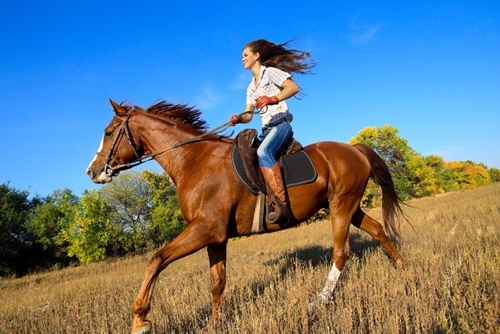Horse trainers know that riding a horse is a quality workout for the animal, but it boosts physical fitness for the rider too.
Depending on how you ride, it may count as moderate or even strenuous exercise. According to a comprehensive scientific compilation of the energy costs of various physical activities, riding a horse requires about 5.5 METs (metabolic equivalent of a task). A MET measures how much energy is used during a movement.
In comparison, walking briskly at 3 miles per hour requires about 3.3 METs, while bicycling at 10 to 16 miles per hour demands anywhere from six to 10 METs.
The METs vary with your mount’s gait. Riding a horse at full gallop uses 7.3 METs, similar to recreational rollerblading. When the horse is trotting, the required exertion drops slightly to 5.8 METs, and riding a walking horse is a 3.8 MET-activity.
Practicing stability is crucial to transfer energy into effort. Horseback riding, at any level, may be able to improve balance – a skill that can carry over to other areas of fitness. Saddling up for a day also boosts coordination, as a number of therapeutic riding programs for the sight-impaired have demonstrated. With the aid of a cane or other instrument to guide them, they learn to ride by feel and new body awareness, strengthening legs and core.
Horseback riding builds muscular strength, especially in the legs. In a study published by the National Institutes of Health, female horse riders who rode for 3.5 hours a week displayed significantly stronger hamstrings and thighs. With that being said, riding does not enhance bone mass, reflecting the fact that it is not a weight-bearing activity.
Whether saddling up for a race or just to practice, horseback riding could provide a solid lower body workout.









